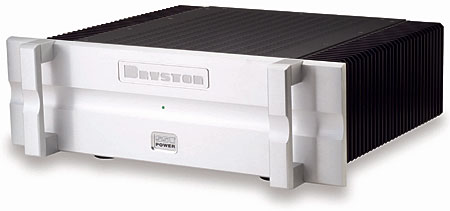| Columns Retired Columns & Blogs |
Bryston 7B SST2 monoblock power amplifier
Hang around long enough, and your reward is often to be taken for granted or ignored. Canadian electronics manufacturer Bryston Ltd. has been around since the mid-1970s, and while—if coverage by Stereophile is any indication—the company has hardly been ignored, it's often taken for granted.

That's due, in great part, to Bryston's inherent conservatism in every aspect of the company's public persona. Maybe they do privately cross-dress and throw debauched bashes and hang from chandeliers, but their public face is one of an engineering-centric, low-key, value-oriented organization more interested in its products' long-term viability than in short-term flash—or any kind of flash. Bryston's principals seem more interested in how their products perform on the test bench than in how they look on store shelves, though the latest batch, including the monoblock amplifier reviewed here, do sport attractively shaped front panels of aluminum. Founder Chris Russell moved into audio only after a decade of working for his father's medical-electronics company, beginning in the 1960s. That background may partly explain why the appearance of Bryston components has always been modest and the product line incredibly stable, any changes more evolutionary than revolutionary.
Bryston has deep roots in the demanding but unglamorous world of professional and broadcast audio, which today, because of the changing recording-studio scene, accounts for less than 15% of the company's business. But through the years, the pro-audio connection has brought cost savings that allowed Bryston to offer, at very reasonable prices, products so solidly engineered and built that they routinely came with parts and labor warranties of 20 years—as does the 7B SST2. Given the company's longevity, it's likely these warranties are worth more than the paper they're printed on.
Great reviews and great measured performance
Search Stereophile's website and you'll find many glowing reviews of Bryston products, including Larry Greenhill's October 1996 report on the 7B ST, and his April 2003 Follow-Up on the 7B SST. LG also reviewed the top of the Bryston line, the 28B SST, in January 2008. (Bryston's nomenclature, like its engineering, is evolutionary, not revolutionary. "ST" are the initials of designer Stuart Taylor; the "SST" appended to the name of each upgrade stands for "Super Stuart Taylor.")
Read those reviews and Follow-Ups and you'll find exemplary measurements and listening evaluations praising Bryston products for their generally smooth midrange, extended and nonfatiguing high frequencies, and excellent low-frequency extension and control, with occasional mentions of sonic blandness. You'll also read excellent descriptions of the components' general topologies, including the dual-mono bridged circuitry, in which the two amplifier modules in each monoblock chassis are wired in series and driven by opposite-polarity signals.
The upgrade from the ST to the SST models removed a switch that let the user change the bridged circuit from series to parallel for driving speakers of ultra-low impedance, but which caused some slight distortion. As I said, there's nothing sexy going on here, just solid, evolutionary engineering.
Like its predecessor, the new 7B SST2 offers 600W in fully balanced, class-A/B operation into 8 ohms, or about 900W into 4 ohms—all for $8390/pair. This is impressive value, particularly given the high build quality for which Bryston is known (each amp is built by hand and individually burned in).
Does the "2" added to the amp's name mean that Stuart Taylor, along with being "Super," is now also a square? Maybe, but it also means something else. Unlike tube amplifiers, which generally produce lower distortion and noise at lower outputs but more of both at higher outputs, solid-state amps tend to produce lower noise and distortion and better drive capabilities from about one-third power and up, but with distortion rising with the frequency. Bryston claims that its latest design maintains almost unvarying amounts of very low distortion, all of it even-order, throughout the audioband, even as the power output dips from the one-third mark down to as low as 1W. Bryston doesn't say why that circuit innovation equals "squared," but it doesn't really matter.
- Log in or register to post comments




































